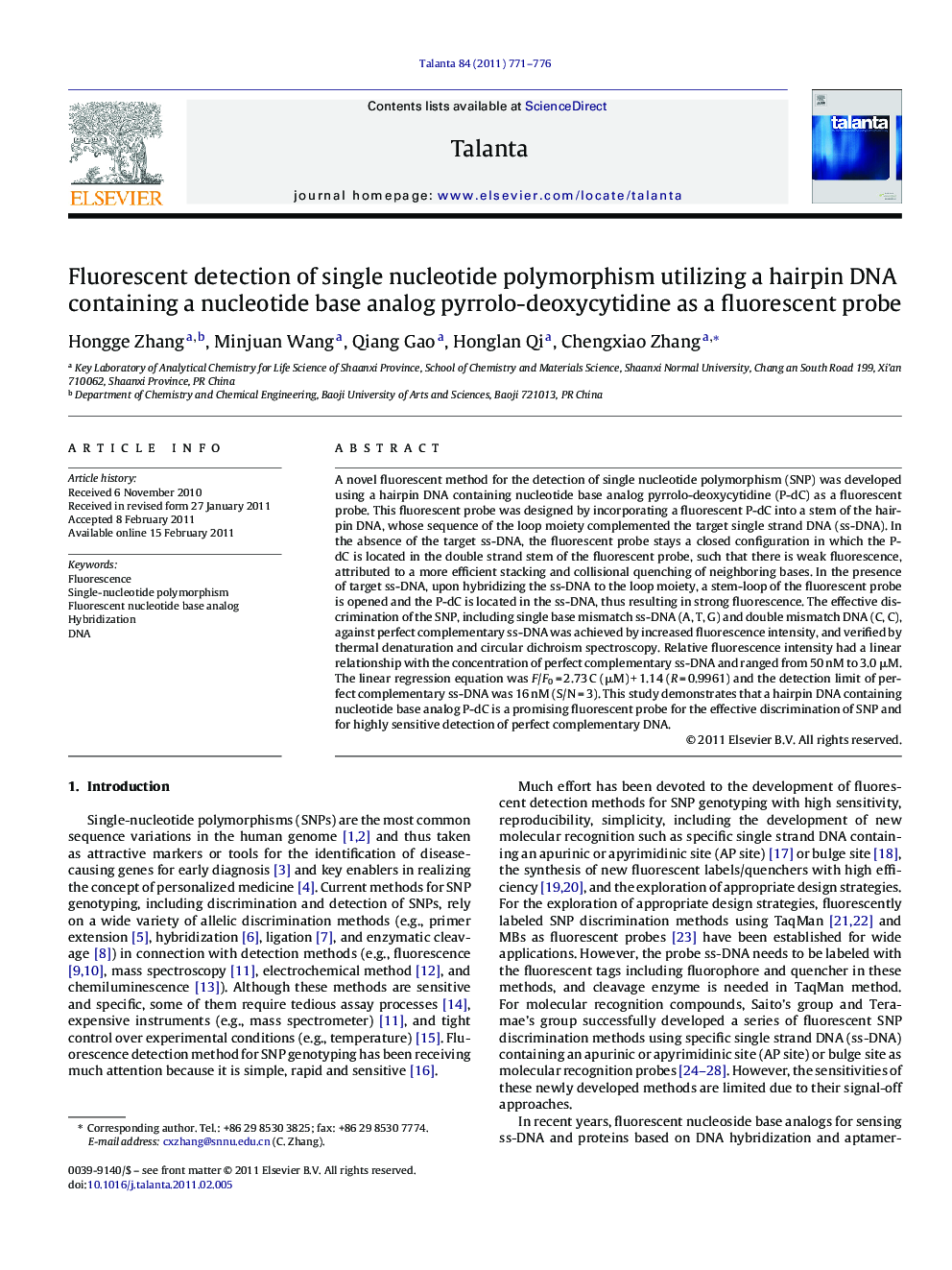| Article ID | Journal | Published Year | Pages | File Type |
|---|---|---|---|---|
| 1244169 | Talanta | 2011 | 6 Pages |
Abstract
A novel fluorescent method for the detection of single nucleotide polymorphism (SNP) was developed using a hairpin DNA containing nucleotide base analog pyrrolo-deoxycytidine (P-dC) as a fluorescent probe. This fluorescent probe was designed by incorporating a fluorescent P-dC into a stem of the hairpin DNA, whose sequence of the loop moiety complemented the target single strand DNA (ss-DNA). In the absence of the target ss-DNA, the fluorescent probe stays a closed configuration in which the P-dC is located in the double strand stem of the fluorescent probe, such that there is weak fluorescence, attributed to a more efficient stacking and collisional quenching of neighboring bases. In the presence of target ss-DNA, upon hybridizing the ss-DNA to the loop moiety, a stem-loop of the fluorescent probe is opened and the P-dC is located in the ss-DNA, thus resulting in strong fluorescence. The effective discrimination of the SNP, including single base mismatch ss-DNA (A, T, G) and double mismatch DNA (C, C), against perfect complementary ss-DNA was achieved by increased fluorescence intensity, and verified by thermal denaturation and circular dichroism spectroscopy. Relative fluorescence intensity had a linear relationship with the concentration of perfect complementary ss-DNA and ranged from 50 nM to 3.0 μM. The linear regression equation was F/F0 = 2.73 C (μM) + 1.14 (R = 0.9961) and the detection limit of perfect complementary ss-DNA was 16 nM (S/N = 3). This study demonstrates that a hairpin DNA containing nucleotide base analog P-dC is a promising fluorescent probe for the effective discrimination of SNP and for highly sensitive detection of perfect complementary DNA.
Related Topics
Physical Sciences and Engineering
Chemistry
Analytical Chemistry
Authors
Hongge Zhang, Minjuan Wang, Qiang Gao, Honglan Qi, Chengxiao Zhang,
